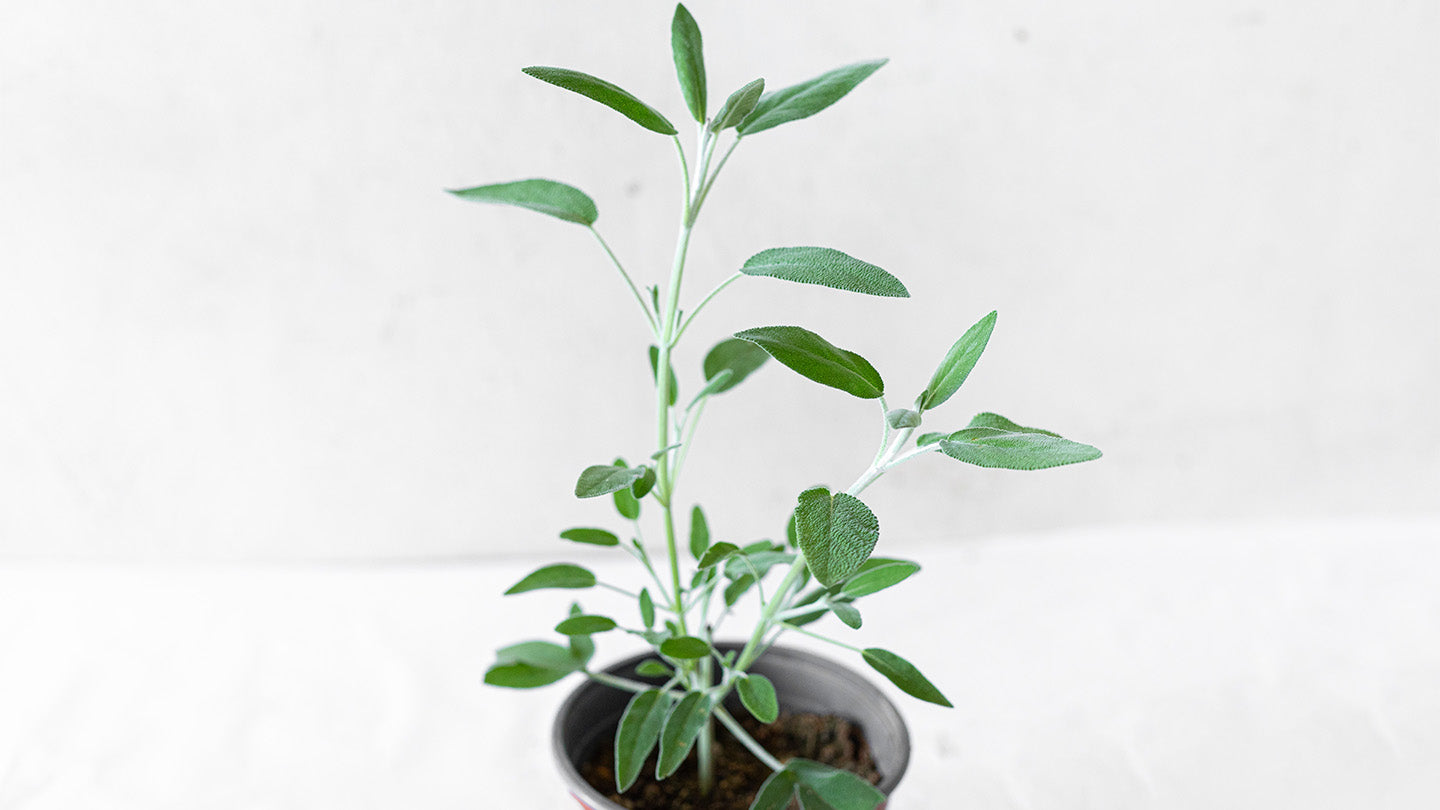cybloom
Sage
Regular price
€5,50 EUR
Regular price
Sale price
€5,50 EUR
Unit price
per
Tax included.
Couldn't load pickup availability
Family: Lamiaceae
Origin: Mediterranean
The Size: 2–2.5 ft. tall, 2–3 ft. wide
Temperature & Humidity: Common sage tends to be a bit hardier than the more ornamental varieties, such as golden, purple, and tricolor sage. Established plants can withstand some frost, but temperatures between 60 and 70 degrees Fahrenheit are best. Sage likes a moderate humidity level. In areas with high humidity, make sure there's enough air flow around the plants to help prevent fungal growth
Lightning: For the best flavor, provide your sage with full sun, meaning at least six hours of direct sunlight per day. However, in zone 8 and higher, your sage will likely prefer some afternoon shade, especially in hot weather.
The Soil: Sage likes a sandy or loamy soil with good drainage. Wet soils can cause rot and be fatal to the plant.1 A slightly acidic to neutral soil pH is best.
The Soil: Sage likes a sandy or loamy soil with good drainage. Wet soils can cause rot and be fatal to the plant.1 A slightly acidic to neutral soil pH is best.
Watering: Sage has moderate moisture needs, along with some drought tolerance. Keep the soil evenly moist but never soggy for young plants. Water established plants when the top 1 to 2 inches of soil dries out. Avoid getting the leaves wet when you water, as that can cause them to mildew
Fertilizer: Sage plants aren’t heavy feeders, and too much fertilizer can result in weaker flavor. You can use an organic fertilizer for edible plants in the spring, or simply work some compost into the soil.
Reproduction: Sage is a lesson in patience when growing it from seed. Plant seeds only about 1/8 inch deep in moist garden soil or seed-starting mix. Keep the soil lightly moist but not soggy. It can take up to six weeks for germination to occur.
Transfer: When potting sage, use a quality well-draining potting mix. Depending on the size of container you start with, you might not have to repot. But if you begin to see roots growing out the drainage holes, move your plant to one pot size up. Gently ease it out of its previous pot, set it at the same depth in the new container, and fill around it with fresh potting mix. Then, water to settle the soil.
Features of Care: The stems of sage plants tend to become woody and produce less flavorful leaves over the years. Pruning can help combat this. As growth begins in the spring, prune out the oldest woody stems to encourage new growth. But even with this pruning, sage plants typically become too woody in about five years and are better replaced with new plants for a quality harvest.
Difficulties: Sage doesn’t have any major pest or disease issues. Root rot can occur in soil that’s too wet.1 Powdery mildew also can occur in wet conditions, but ensuring that there’s good air circulation around the plants can help prevent this. Common garden pests including slugs, spittle bugs and spider mites also might affect plants.3 Use an insecticidal soap to treat infestations.


